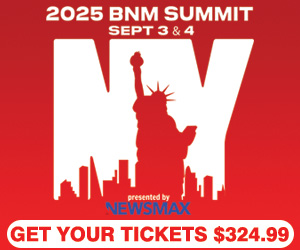At the recent BNM Summit in Nashville, we heard how so many news/talk stations are far more than just their over-the-air signal. Sure, just about every station streams. Add in podcasts, social media, video, and more. The net is that news/talk wants to be everywhere that their listeners want to hear (or see) them. How do all these distribution channels fit in with earning credit with Nielsen?
Regardless of what you may think, the primary purpose of any ratings system is to allow buyers and sellers to get to an agreed-upon price for advertising messages. By playing the role of neutral third party, Nielsen gives subscribers an audience estimate that allows pricing to be negotiated. Along the way, programmers learn what is and isn’t working with their audiences and make adjustments.
When the only content that required measurement was the over-the-air signal, the system was straightforward. Regardless of the method (PPM or diary), the estimate covered all of the station’s audience. But today, we have so many more ways to distribute content that it’s important to review what it takes to receive credit.
Let’s start with streaming. If your stream is the same as your OTA signal, then you’ll get credit. In PPM, you can opt for total line reporting (TLR) and Nielsen will combine the AQH and deduplicate your cume estimate. If you insert different spots into your stream, then Nielsen won’t allow TLR because the estimate would be misleading for advertisers who are buying just your OTA signal (there are exceptions to the rule, but they’re very few and we’ll avoid those for now).
Of course, if you have the option to sell both the OTA and the stream as a package, you can combine the two numbers in other processing systems (Tapscan, etc.). Keep in mind that in PPM, you will have to license your stream as well (more money for Nielsen).
Now let’s get more esoteric. Let’s say you want to take content that ran on your local shows and put it online for listeners to access later. Can you get credit? The answer is yes, but with caveats. It must be the same content that you ran on air (complete with the PPM codes).
Here’s a hypothetical example: Your host was interviewing a prominent politician from 7:30 until 7:50 on your morning show. The interview was a good one and the host took a break for a stop set from 7:40 until 7:43. You want to make the interview available on your website and social media. Great, but will you get credit from Nielsen?
The short answer is yes, but you must follow the rules. First, the interview needs to carry your station’s PPM codes, the same as when it was initially aired. In other words, you need a recording that is post-encoding. In some operations, that’s not easy to accomplish.
Next, you might want to eliminate the spots from the encoded piece. Don’t. Nielsen requires that you run the piece exactly as it was heard including the commercials. In this example, you have two options to get credit. Run the first part of the interview (7:30 until 7:40) as a standalone. A second piece (7:43 until 7:50) would also stand alone, perhaps labeled as part 2 of the interview. Otherwise, run the whole 20 minutes complete with the commercials.
What happens to the credit? A panelist heard that morning interview at 4 in the afternoon. Where is the credit assigned? It’s given to the original airtime. That 20 minutes of listening at 4 PM is credited back to 7:30 AM because the codes said so.
How about video? Do you run a video feed, whether on YouTube or through your website? Great, but can you get credit with Nielsen Audio? Again, the answer is “yes, but”. And again, the key point is that the commercials have to be the same ones that are running on your air signal. And of course, the video feed has to be encoded as well.
If you leave the studio sound up during stop sets so that viewers can feel like they’re “in the room” with the hosts, you’re out of luck. If you can run the OTA audio complete with your code, you’ll get credit.
Nielsen’s position is that their estimate should reflect the audience that the advertiser is reaching. Keep that in mind and you’ll understand the logic behind their rules.
The technical aspects aren’t always easy. Your encoder may be much further down the chain making it hard to get a clean (pre-air) encoded signal. You’ll need people to edit and post the pieces. And the number of meters is so small that you may decide it isn’t worth the effort.
Perhaps the best first step is to conduct an inventory of what you’re doing now and what you may be able to do. Consider the cost/benefit to your operation…the answer should be clear.
Let’s meet again next week.





Hello Dr. Ed – as a fellow ratings wonk (if there is such a thing), thank you for the article about the crediting of content played later on the internet.
Is there a time limit for that credit to be applied? For example, does it need to be listened to in the same survey week? Or can it get added to the ratings further out than that?
Another factor to be considered in the cost-benefit analysis is that a lot of internet content is played back through earbuds, therefore may not actually be able to be captured by PPM.
Lastly, how is this type of listening entry handled in diary markets?